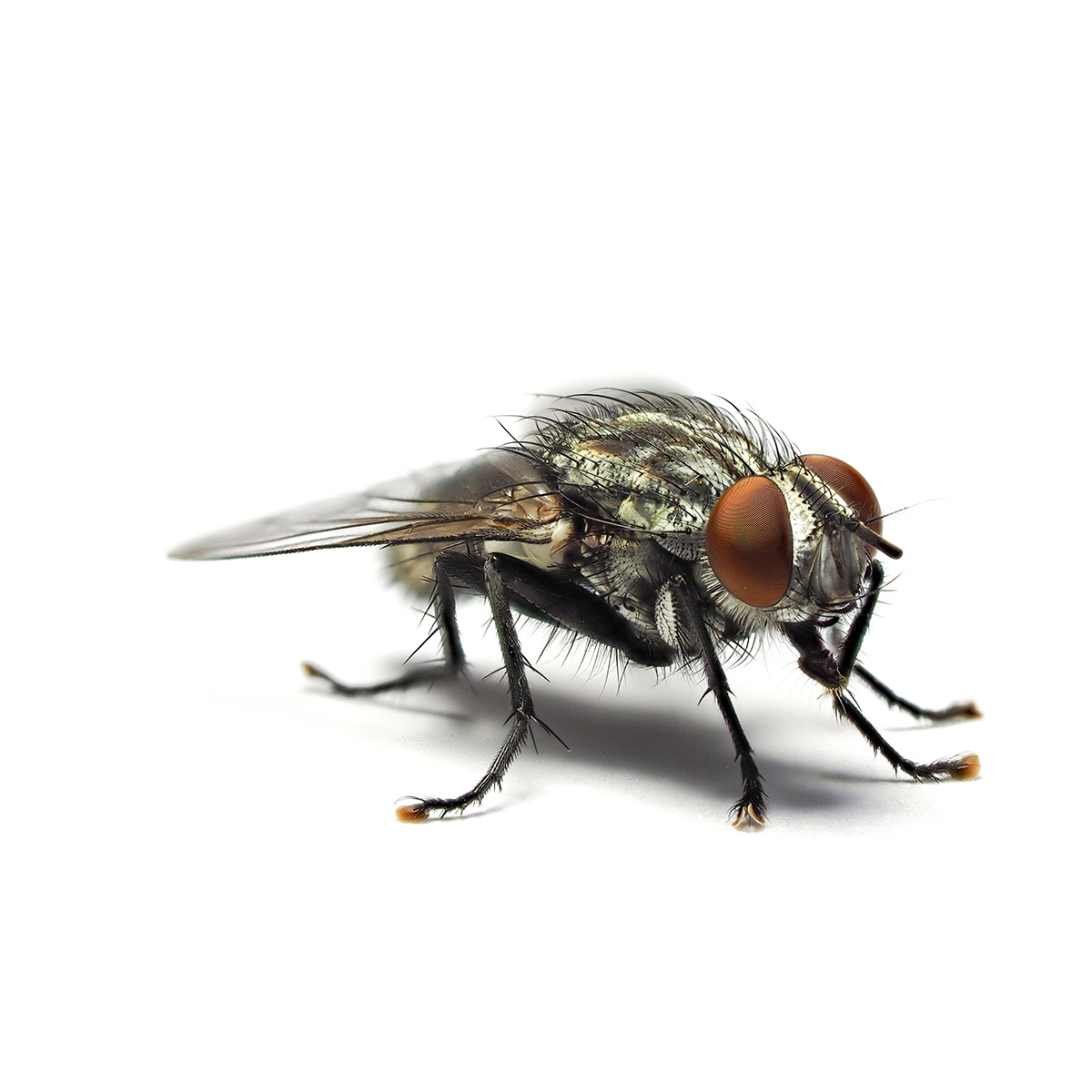
Common Fly
MUSCA DOMESTICA
Identification
Flies belong to the order Diptera, insects with a complete cycle of metamorphosis. The adults are 6 mm long and have a 12 mm wingspan. The grey thorax has 4 dark longitudinal ribs. The first half of the abdomen is ochre, sometimes transparent on the sides, with a dark central rib widening to cover the last segments. At rest, the wings stay unfolded.
Living Areas
They grow on the surface or inside decomposing plant matter. Adults can travel for several kilometers. They are attracted by heat, light at night and by the smell of food.
Feeding
Larvae: Decomposing organic matter. Adults: Organic liquid with a preference for sweet or fermented materials.
Nuisances
The domestic fly annoys animals and people in homes and stables, but also in retirement homes, childcare centres or hospitals. They can cause major and disruptive infestations around farms and landfills.
Life Cycle
The female lays 900 to 1000 eggs in 4 to 5 batches. The larvae called maggots are laid in manure, food waste, household garbage and any rotting organic matter from which they feed. The maggots fear the light and remain deeply burried and undergo 3 moults. Under favorable conditions (30°C and over 75% humidity), the development cycle takes only 1 to 2 weeks. The incubation period is 8 to 48 hours, depending on external conditions. The fly lives a few weeks (1 to 2 months at most)
except when it is wintered.
